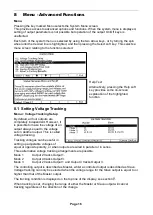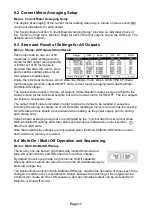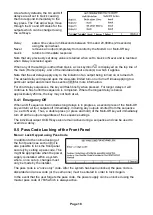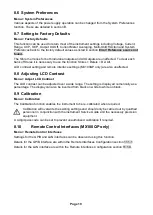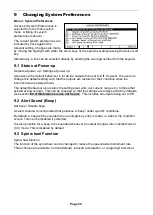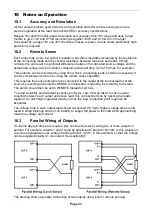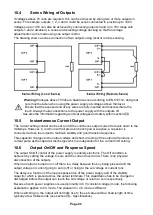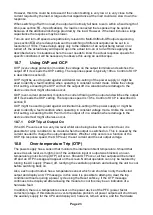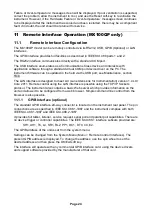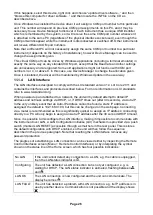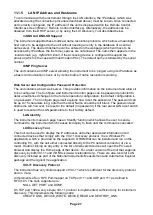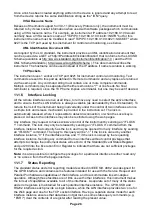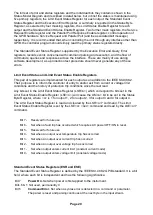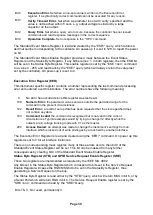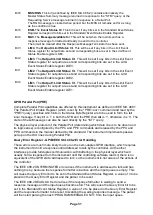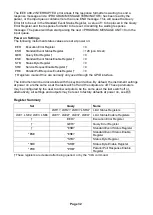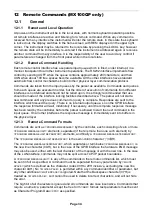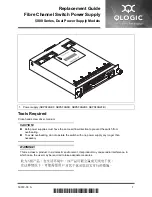
Page 22
10.4
Series Wiring of Outputs
If voltages above 70 volts are required, this can be achieved by wiring two or more outputs in
series. For example, outputs 1, 2, 3 and 4 could be series connected to provide up to 140V.
Voltages up to 140V can also be achieved by connecting outputs 3 and 4 (in 70V range with
outputs 1 and 2 disabled) in series and selecting voltage tracking so that full voltage
adjustments can be made using one output control.
The drawing shows a series connection of two outputs using local or remote sensing.
Warning!
Voltages above 70Vdc are hazardous live according to EN 61010-1 and great
care must be taken when using the power supply at voltages above this level.
Ensure that the exposed end of any wires are fully inserted and inaccessible to the
touch. Always make connections to the power supply with the outputs off.
See also the information regarding terminal voltages and safety within section 4.3.
10.5
Instantaneous Current Output
The current setting control can be set to limit the continuous output current to levels down to the
milliamps. However, in common with all precision bench power supplies, a capacitor is
connected across the output to maintain stability and good transient response.
This capacitor charges to the output voltage and short-circuiting of the output will produce a
current pulse as the capacitor discharges which is independent of the current limit setting.
10.6
Output On/Off and Response Speed
The output On/Off control of the power supply is entirely electronic. The Off condition is
achieved by setting the voltage to zero and the current level to low. There is no physical
disconnection of the outputs.
When an output is turned on or off there is a delay between the key being pressed and the
output voltage or current going to zero (off) or rising to the set voltage or current (on).
The delay is a function of the loop response time of the power supply and of the stability
capacitor which is placed across the output terminals. This capacitance has to be charged or
discharged before the output can reach the set voltage or return to zero respectively.
Because bench power supplies are used primarily in CV (constant voltage) mode, the following
explanation applies to CV mode. The situation for CC mode is different.
When switching on, the output will normally rise to the set value within a fixed length of time,
typically a few milliseconds (see section 14 – Specifications).









